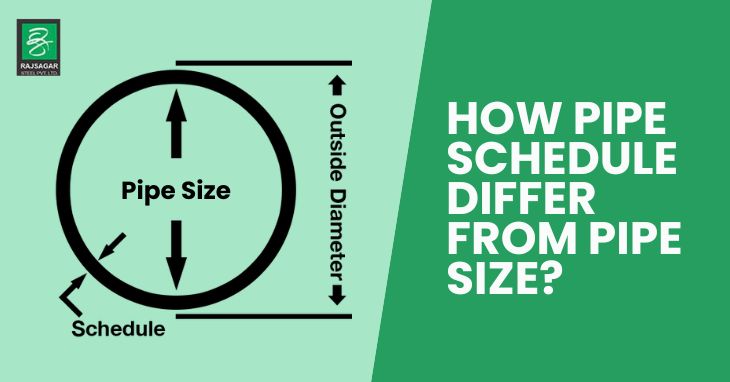What is Pipe Size?
When dealing with pipes, it is essential to understand pipe sizes to ensure the right fit for your project. Pipe size refers to the dimensions of a pipe, including its inner and outer diameter and its thickness. This article will help you understand pipe size measurements, the standards for these sizes, and the relationship between pipe size and pipe schedule.
Understanding Pipe Size Measurements
Several key terms relate to pipe size, including nominal pipe size, outside diameter, and wall thickness. These measurements ensure that pipes are compatible and fit well with the necessary fittings and systems.
Nominal Pipe Size
Nominal Pipe Size (NPS) is a standardised designation for a pipe’s diameter. It’s based on a rough measurement and does not reflect the actual dimensions of the pipe. The size helps identify pipes with similar inner diameters, even though the outer diameters may vary.
Outside Diameter
The Outside Diameter (OD) refers to the total outer measurement of the pipe. This measurement is crucial because it helps determine the space the pipe will occupy within a system.
Wall Thickness
Wall thickness refers to the thickness of the pipe’s walls. This is important because the thicker the wall, the stronger and more durable the pipe.
Standards for Pipe Sizes
There are several internationally recognised standards for pipe sizes, which ensure consistency and compatibility across different systems.
ANSI/ASME Standards:
The American National Standards Institute (ANSI) and the American Society of Mechanical Engineers (ASME) set the standards for pipe dimensions in the United States. These standards define the pipe sizes and schedules commonly used in industry.
DIN Standards:
The Deutsches Institut für Normung (DIN) is a German standardization organization. Their standards are widely used in Europe and ensure the uniformity of pipe sizes across industries.
ISO Standards:
The International Organization for Standardization (ISO) provides global standards for pipes, ensuring consistency in dimensions and manufacturing processes across different countries and industries.
What is a Pipe Schedule?
The pipe schedule refers to the thickness of the pipe walls. A higher schedule number indicates a thicker wall. The schedule is essential because it affects the pipe’s pressure rating and durability.
Basic Measurements and Terms
Pipe size is defined by three key measurements: Nominal Pipe Size (NPS), which refers to the pipe’s internal diameter; Outside Diameter (OD), the total outer measurement; and wall thickness, which determines strength and pressure rating. Together, these measurements ensure proper fit and performance in various applications.
Pipe Schedule Numbers
Pipe schedule numbers, such as Schedule 5, 10, 40, 80, and 160, indicate wall thickness. Higher numbers like Schedule 80 and 160 are used for higher-pressure applications. Schedule 40 is common in standard plumbing and residential systems. Schedule XS and XXS are used for extreme high-pressure environments. Higher schedules like 400 and 800 are for specialised, ultra-high-pressure systems
Difference Between Pipe Size vs Pipe Schedule
| Feature | Pipe Size | Pipe Schedule |
| Definition | Refers to the nominal or outer diameter of the pipe. | Refers to the thickness of the pipe wall. |
| Importance | Determines compatibility with fittings and connections. | Determines the strength and pressure capacity of the pipe. |
| Application | Affects the space a pipe occupies in a system. | Affects the pipe’s ability to handle higher pressures or corrosive environments. |
| Material Strength | Does not affect material strength. | A thicker pipe schedule increases material strength and durability. |
| Price | Larger pipe sizes typically cost more due to material. | Higher schedule numbers generally result in higher costs due to thicker walls. |
| Impact on Pressure Rating | Affects the internal diameter, indirectly influencing flow. | Directly influences the pipe’s pressure rating. Higher schedules support higher pressure. |
| Relation to Pipe Fittings | Pipe size dictates which fittings and connections can be used. | Pipe schedule affects the types of fittings (e.g., thicker pipes may require different joint fittings). |
| Pipe Strength | Size does not affect strength; it’s about the diameter. | Schedule determines strength. A thicker wall gives more durability under high-stress conditions. |
| Suitability for Different Fluids | Larger sizes may be used for fluids with low viscosity that need to flow easily. | Pipe schedule helps determine suitability for different fluids, especially under high pressure or harsh conditions. |

